Mark Amery – 7 December, 2017
In her accompanying essay Vicente quotes Lucian Castaing-Taylor: “What if film not only constitutes discourse about the world but also (re)presents experience of it?”—offering “thick depictions” not just “thin descriptions.” While that rather undervalues the invention of cinema as it stands, it points to values found in much artists' cinema and which Thick Cinema explores.
Fiona Amundsen, John Di Stefano, Kim Pieters, Sam Hamilton, Joyce Campbell
Thick Cinema
Curated by Mercedes Vicente
Commissioned by Circuit Artist Film and Video Aotearoa New Zealand
Christchurch Art Gallery, 25 August 2017; Embassy Cinema, Wellington, 1 November 2017; and Te Uru, Auckland, 12 December 2017.
I am put in mind of a translucent membrane of memory, stretched ever thinner as a film between our eyes and the world. Moving image is increasingly pervasive in our lives, and spread increasingly slickly. It makes a cinema that is somehow ‘thicker’, slower, more sensorial and of the body more valuable. I like then this title of curator Mercedes Vicente‘s for the third annual series of short New Zealand artists’ cinema commissioned by Circuit: Thick Cinema.
In her accompanying essay Vicente quotes Lucian Castaing-Taylor, founder of a wonderful sounding thing at Harvard University called the Sensorial Ethnographic Lab: “What if film not only constitutes discourse about the world but also (re)presents experience of it?”—offering “thick depictions” not just “thin descriptions.” While that rather undervalues the invention of cinema as it stands, it points to values found in much artists’ cinema and which Thick Cinema explores.
First, some introduction. Circuit was established as an agency in 2012 to promote, commission, and distribute New Zealand artist moving image and enable critical discussion. It receives major support from Creative New Zealand. The last five years has seen Circuit’s programme continue to grow. As well as a website providing a sizeable growing repository of moving image work, there are exhibitions (currently Pulse/Repeat at Auckland’s Audio Foundation, 30 November - 20 December 2017), discussion groups, a podcast (which disclaimer, I host), commissioned writing, and in Wellington, partnering with Wellington City Council a 24 hour public screen for artists video in a small alleyway, Mason’s Lane. Circuit exploits it and its medium’s mobility, working in partnerships with institutions and independently to present programmes and symposia, and provide artists’ international distribution. Vicente for example is a 2017 Circuit ‘curator-at-large’ based in London. She led the annual Circuit symposium The Thickness of Cinema in Christchurch across different venues in August, at which this programme premiered.
This annual series of commissions has involved an internationally based curator and five to six short works, of under 10 minutes in length, that can work as one screening programme. The first in 2015 asked artists to respond to the poetry of Joanna Margaret Paul, and the second in 2016 asked them to react to the writing of the late Julian Dashper. The significance of both Margaret Paul and Dashper to artists’ cinema has been recognised by each also being the subject of Circuit exhibitions or curated screening programmes.
In a way Vicente‘s programme is a reaction to the Dashper programme (curated by George Clark). Dashper’s conceptual concerns saw work where film—the materiality and the experience—is of little concern next to the ideas being plainly pointed at. He’s an artist for the Youtube age. And while those last two programmes saw artists create work they might not otherwise in response to a quite specific brief, the sense I get with Thick Cinema is that Vicente’s broader theme has given artists’ funding to create work that they might have been planning to make all along. This is a good thing in supporting artists’ practice, and Vicente’s programme still hangs together beautifully in the way these artists all consider a sensorial and bodily experience in cinema and its connection experientially to present and to past.
I caught Thick Cinema at Wellington’s Embassy Cinema, a screening in association with Adam Art Gallery. There’s much strength to having a comfortable cinema presentation for this 56 minute programme, and in keeping with the programme theme the big screen recognises the scope in richness and depth of moving image.
The programme begins and ends with single long takes at dusk—Kim Pieters’ Philosophy and Sam Hamilton’s For Thirty Years, Nancy Would Sit Out on the Street Corner and Watch the Sunset. Dusk—that time of heightened sensorial experience when shadows lengthen, light and darkness mix and image goes from lit sharpness to blur.
The further you go south in New Zealand, the dusk in summer is longer. The magic of this time of transition I’ve found to be gentler in the lower South Island, a more meditative stretch. There’s a shimmer, an almost electrical silver charge and its embodied in Pieters’ mesmeric Philosophy, a single, static eight-minute piece of footage shot in the Dunedin Botanic Gardens.
Pieters creates intimacy, a rich meditative space within which light plays. The still, dark shadows, shapes of buildings, landscaping and tree trunks hold the glimmering play of light on pond, the movement of people and of branches in the breeze. A visceral space, like a kinetic drawing, it’s as if the small movements are tickling your nerve endings. While people in shot move as incidental shadows, it’s the graceful arcs of birds, light on wings flashing, that light-up the scenes like small indoor fireworks.
The materiality given to the film itself, its own flicker with light, is reminiscent you could say of impressionist painting. This abstract energy is stressed by what appears to be an underexposing of the film and/or alteration in postproduction—it’s hard to tell, just that what you see has become heightened and of a different time and place. Key also to creating the sense of a more personal, interior space from a public space is the haunting, delay-drenched soundtrack by William Henry Meung, its ambient swells having the effect of deepening your breathing.
The film charges up an experience of being, the enchantment of being still and at one in an environment. Who needs drugs? I’ve seen a number of Pieters’ films online, and up large in the Adam Art Gallery survey show what is a life? but soft in my seat in the cinema I found the experience of Philosophy revelatory.
Another filmmaker exploring with light the experiential and poetic is Joyce Campbell, though the effect is altogether more disruptive. Company Stream sees the camera, us, underwater being with an eel, moving through the confusing veils of light, dark and bubbles in the murk, trying to navigate losses in perspective and refractions caused by the water’s surface. It is a highly disorientating experience. This seems the works experimental experiential point. The eel only reveals itself truly to us late in the film. A kind of nature anti-documentary, it suggests ecology as ultimately untameable. It resists the camera, and the possessive notions of the sublime usually carried with its capture. It is more true to the embodiment of an open eyed aquatic experience - one of being with a fish rather than fishing for one, and that’s uncomfortable.
A chugging, twanging, scraping improvisational soundtrack only serves to further dislocate us. The film is almost violent in its refusal to provide framed pictorial clarity. On first viewing I found the experience frustratingly adrift of connection, or a rhythmic pulse that allowed me to breathe with the work. Perhaps I needed to give in more to the swimming, or perhaps this interesting experimentation is less suited to the cinema screen. I didn’t need the soundtrack. For once I wished for the freedom of space, time and distance afforded by the smaller gallery video monitor.
A film about what we can’t see and what history struggles to collect, Fiona Amundsen’s A Body That Lives is based around an interview with a 96-year-old Japanese man Teruo Murakami who was one of a 1000 prisoners of war involved in a breakout from a camp in Cowra, Australia.
Again the familiar conventions of the documentary are twisted. The film opens with American WWII documentary footage of soldiers running feet and the flashes of night explosions, but the film is silent and cropped to remove context. Then the screen goes black and we then hear the audio tour commentary at present day Cowra, asking you to imagine the POW camp site. The film ends with images of the commemorative Japanese gardens at Cowra.
In this way a dramatisation of history is opened out rather than given, but I found the arrangement of these elements of the work unsatisfying. The WWII footage in particular did not feel sufficiently connected - the documentation of the Cowra site and the interview with Murakami was enough.
What is powerful with A Body That Lives is the expression of the deterioration of memory and our actual internal struggle with it. In interview this is stressed by the presence of Murakami’s body, Amundsen’s camera coming in close as he rocks uncomfortably in and out of frame, stooped with age, often more out of shot than in. Now very elderly, there is the absence under questioning with Murakami of a coherent narrative of the events of the breakout. Reliant on the body, memory corrupts and in this case is bound to a trauma. Recollection becomes fragmentary, the silences powerful. Physically we feel the expression of a man forced to hide in a trench 70 years ago, who at that moment was prepared to die, yet who still lives. “I am not really willing to remember” he says finally. It raises questions for us, as we look at the images of the Cowra Japanese Gardens, about who we memorialise for.
John Di Stefano’s Murmurations (Rome) is also interesting for its connection between the movement of our body with camera and our consciousness of the past. The experience of walking and looking, thinking on the terrible silence of history and the collective will behind events, as we observe the rhythms of the everyday.
Accompanied by Pier Paolo Pasolini reading from his poem ‘Le ceneri di Gramsci’ (‘The Ashes of Gramsci’), which encourages us to be awake to the legacy of fascism, in Rome Di Stefano walks through the Foro Italico, a sport complex which celebrated Mussolini’s regime, and the Fosse Ardeatine, catacombs where 330 civilians were massacred by German occupation troops during World War II. Through these the camera faces the ground, keeping close to the artist’s shadow and feet. Then it looks up to the extraordinary flocks of starlings in Rome that swarm daily in their thousands at dusk. Called ‘murmurations’, the birds’ rich uncoordinated patterns are contrasted to the sure directional lines of the walked many-pieced mosaic paving of the Foro and the uneven cracked paving of the dark catacombs. It questions our collective responsibility to not lose sight of each other as we find our way day to day.
The power of contemplation, of being together in the present, and the relationship between age and memory—these threads in these works come together in Sam Hamilton’s single long take of a group of teenagers on a street corner in Portland sitting and watching the sunset. The work was inspired by the action of Hamilton’s former next door neighbour Nancy who, as the title tells us, would daily for thirty years sit out on the street corner and watch the sunset.
A performance work if you like, Hamilton commissioned these teens to sit there, and gave them no direction other than to ban the use of cellphones. In this way they are strangely present, and silent, attending to a task, alternately bored and absorbed, enduring. The work is charming, witty, but gently philosophical. Life, it seems to say, is something we must allow time for immersion in, remembering to connect to a bigger natural communion.
The actors are asked to give into the scene in front of them in the way we were asked to give in to Pieters. We are in each other’s presence in the present, together.
However, we don’t see the sunset, the beauty this group looks on. We share with them time passing, and the beauty of the mundane every day, but we are also voyeurs of them. It’s like an intense distillation of a television series, freed of narrative.
Uncomfortably, like reality television judges, we are put in a position of being critical of their performances in response to the task set. It’s like the selfie taken to a new collective extreme, but where the control has been given over to a third party.
I like how the seemingly simple here operates on so many different levels. How absorbed we can be in their absorption. It’s at turns celebratory and critical of the way we connect with the world and each other. Like other works in Thick Cinema it brings the experience of the body in the moment, to the work with time of the camera.
Mark Amery
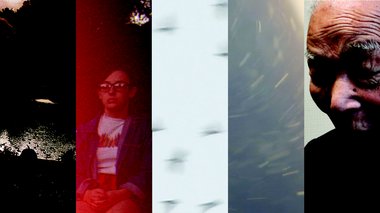
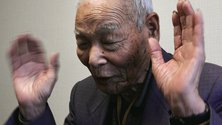
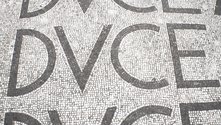
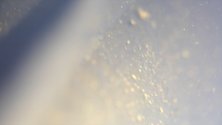
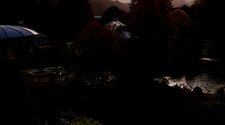
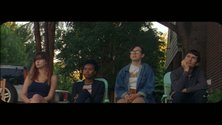
 Advertising in this column
Advertising in this column Two Rooms presents a program of residencies and projects
Two Rooms presents a program of residencies and projects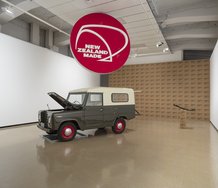
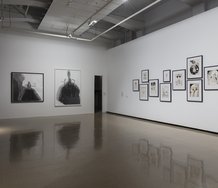
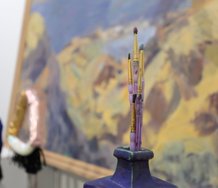
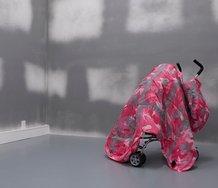
This Discussion has 0 comments.
Comment
Participate
Register to Participate.
Sign in
Sign in to an existing account.